
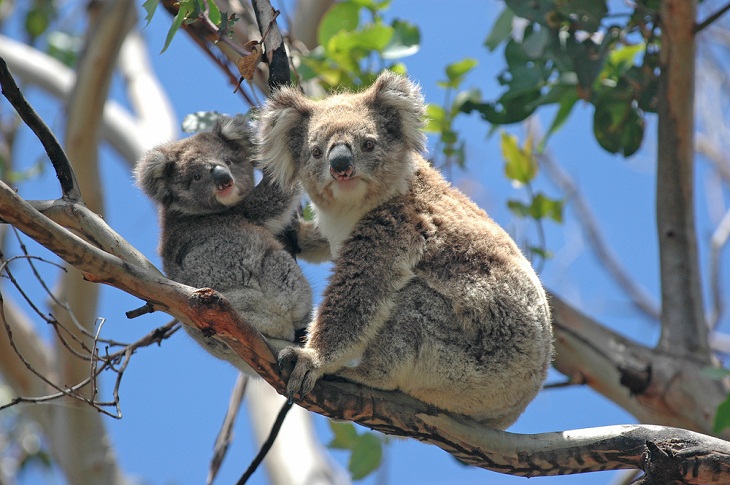
Did you know that koalas are some of the sleepiest creatures in the animal kingdom? These cuddly marsupials spend most of their day dozing in tree nooks, where they can be found for up to 18 hours at a time. And can you blame them? With a diet of low-nutrition, toxic eucalyptus leaves, they don't exactly have an energy boost. In fact, they rely on two species of eucalyptus leaves to meet their nutritional needs, which is why they stick to the treetops.
Sadly, despite their undeniable cuteness, koalas are in trouble. Habitat loss and vehicle collisions have led to a rapid decline in their population, with as few as 100,000 mature koalas estimated to remain in the wild. The world must work together to protect these precious animals and ensure that they continue to thrive in their natural habitat.
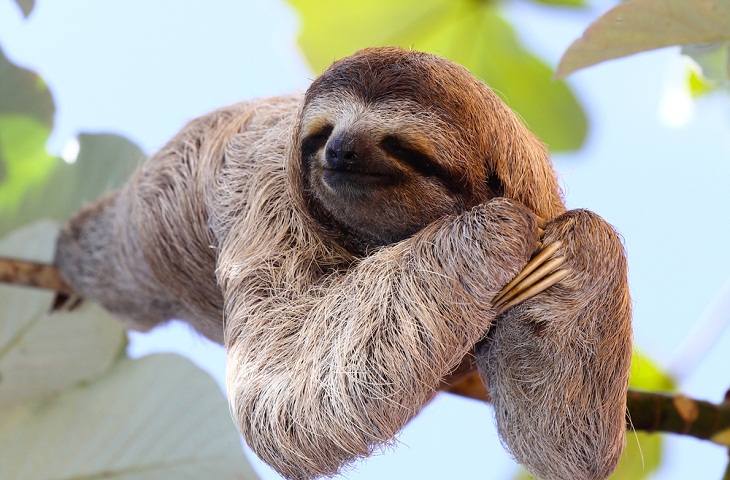
The moment you see its bulbous eyes, stubby legs, and elongated neck, you know exactly who it is - the one and only, the sloth. Sloths have become a symbol of relaxation and leisure all over the world, thanks to their perpetual smiles and laid-back attitude. These charming creatures may not move quickly, but their lovable personalities and quirky habits more than make up for their lethargy.
Found in Central and South America, three-toed sloths are primarily arboreal animals, although they also enjoy a good swim in freshwater lakes, rivers, and swamps.
Don't let their slow pace fool you, though - these animals are equipped with fearsome claws on their front feet that allow them to climb high into the trees in search of their favorite food: eucalyptus leaves. And while their famously slow metabolism means they move at a snail's pace, it also allows them to conserve energy and survive on a strict diet of leaves, which they digest extremely slowly.
Unfortunately, like many animals, sloths are facing threats such as habitat loss and poaching.
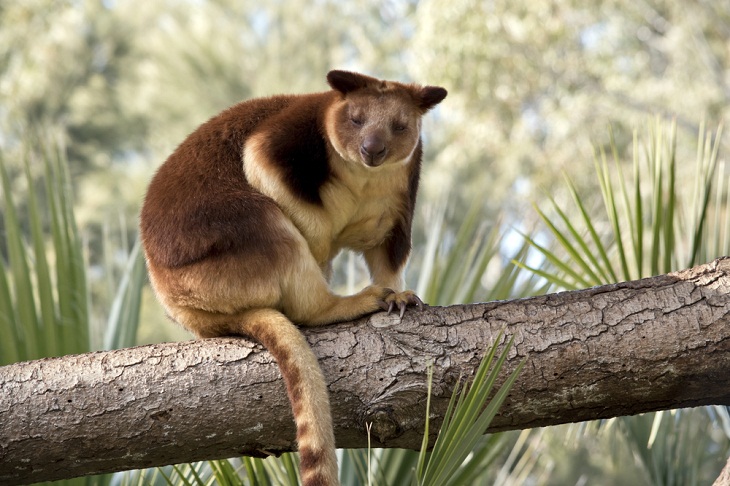
If you thought kangaroos were limited to bouncing around on solid ground, think again! The arboreal tree kangaroo is here to prove that these marsupials can take on the treetops with ease. Found in the lush rainforests of Australia and Papua New Guinea, tree kangaroos use their muscular hind legs to hop against the back of a tree while wrapping their forelimbs around it. This unique motion allows them to slide upward and make their way to the top.
But that's not all - these tree-dwelling kangaroos also leap impressively. They can jump from heights of up to 60 feet (18 m) without getting hurt, thanks to their powerful legs and strong tails which act as a balancing mechanism. Rampant habitat loss and relentless hunting have pushed these incredible creatures to the brink of extinction, leaving a void in the canopy where they once roamed. The future of these incredible animals is uncertain, and urgent action is required to preserve them and preserve the delicate balance of our environment.
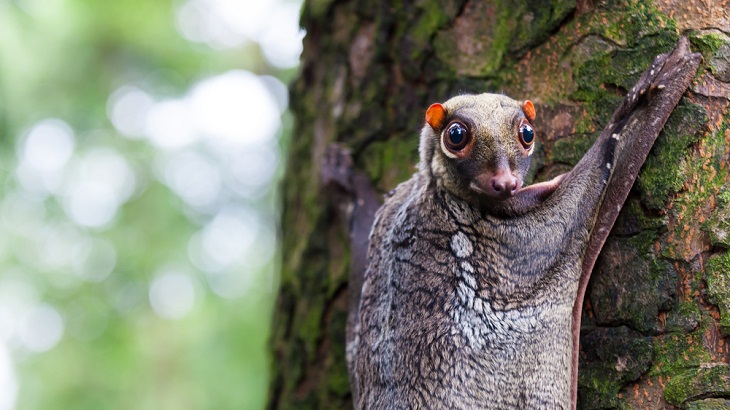
The "flying lemur" may not actually fly, but its remarkable gliding abilities make it one of the most agile creatures in the forest canopy. Despite not being a true lemur, this mammal has adapted unique features for arboreal life, including a thin, lightweight body and a flap of skin that extends from its limbs to form "wings" for gliding. This glider is a master of air, often soaring distances of over 300 feet (91 m) in a single glide while losing very little altitude.
While their gliding skills are impressive, their climbing skills leave much to be desired. With weak, thumbless paws, they clumsily make their way along tree branches, making the ability to glide all the more critical to their survival. And while they may not be as well-known as some other tree-dwelling animals, these "flying lemurs" are a vital part of the ecosystem in Southeast Asia, where they can be found in the dense rainforests.
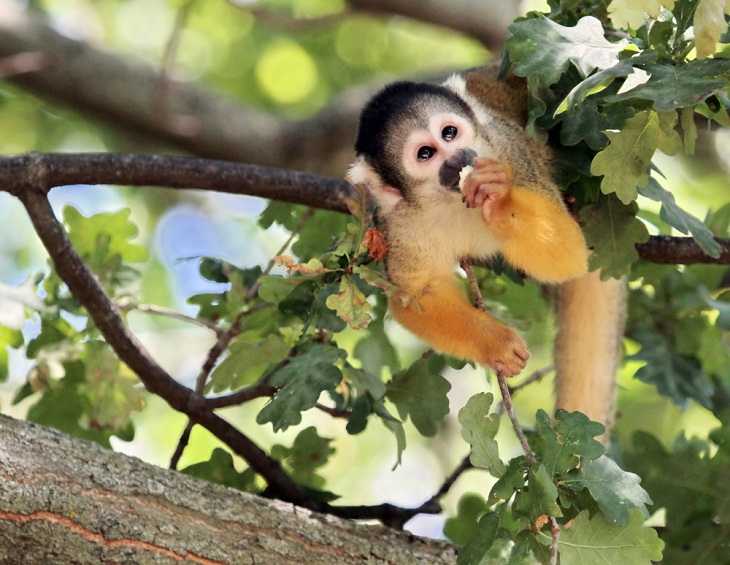
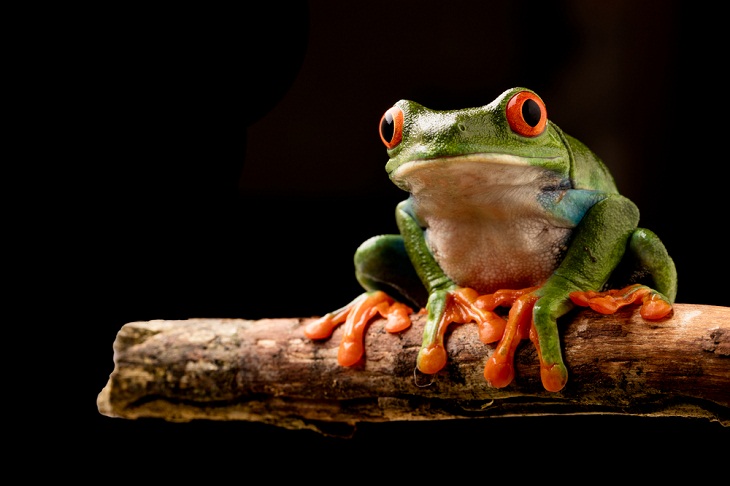
Tree frogs have slender bodies, long fingers and toes, and disc-shaped digits, making them the ultimate masters of the trees. These amphibians are perfectly adapted to life in the canopy, using their suction capabilities to grip limbs and change color in response to their surroundings.
Although some species feature bright tropical colors, others have a duller appearance to blend into their temperate environment. And while they may be small in size, their cuteness certainly makes up for it. One look at them, and you'll be smitten! Their expressive eyes and adorable features make it nearly impossible to resist their charm.
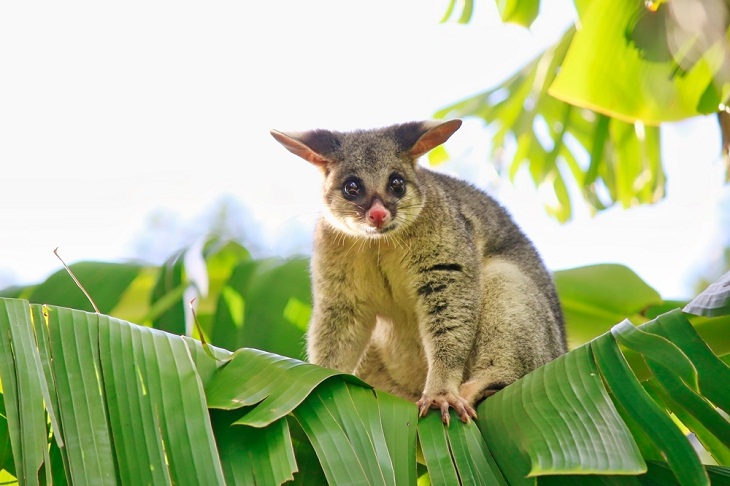
Australia's brushtail possums are surprisingly adaptable creatures that have successfully integrated themselves into urban environments, making them a common sight in suburban areas. Although they are nocturnal, they are active and vocal during the night, emitting a variety of interesting sounds that can be heard throughout the neighborhood. Their ability to thrive in human-dominated landscapes is due to their highly varied diet, which includes everything from fruits, flowers, and leaves to insects and small animals.
In addition to their impressive foraging abilities, these possums also play a crucial ecological role in controlling pest populations. Encouraging a brushtail possum to take up residence in your yard tree can help to keep other possums away and ensure that your garden remains free of pests. However, it is important to remember that these creatures are wild animals and should be respected as such.
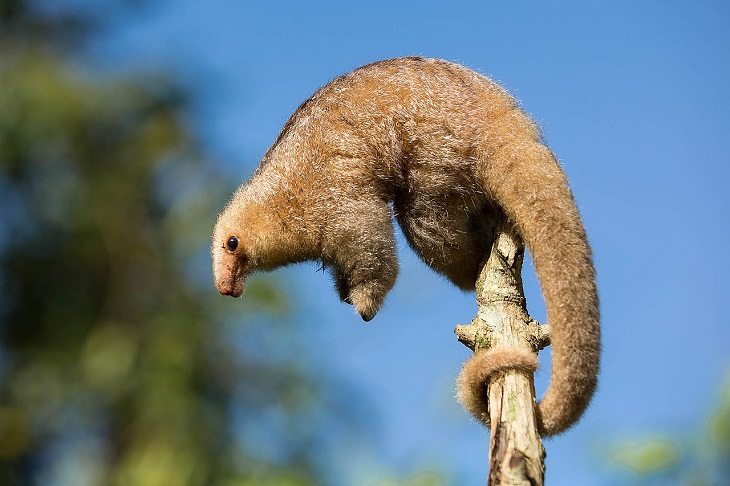
The silky anteater is the ultimate arboreal acrobat, making the forest canopy its permanent residence. These golden-furred creatures have perfected the art of living among the treetops in Central and South America, where they spend their days snacking on insects and snoozing in the branches. From their prehensile tails to their tiny claws, every aspect of their body is tailored for life in the trees.
The name "silky" is quite fitting, as their delicate golden coats have a silky texture to them. Although they are small, they are formidable climbers, in part because of their long, strong prehensile tails.
While the silky anteater's claws might look intimidating, they're mainly used for climbing and protection. In reality, these little creatures are quite docile and harmless, unless they feel threatened.
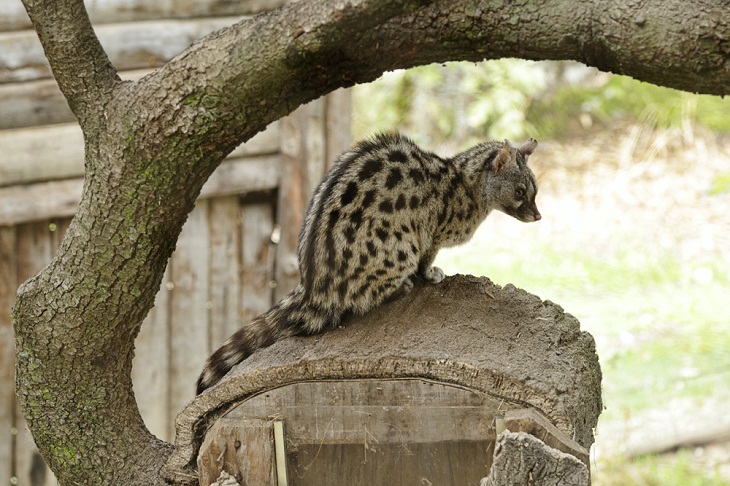
Meet the elusive and charming genet, a feliform species and close relative of the civet family. These tree-dwelling creatures are found in various habitats across Africa, Europe, and the Middle East, where they spend most of their time hunting for small rodents, birds, and reptiles. They share the same intelligence and agility as their feline relatives, and like cats, they have retractable claws that help them climb trees with ease. Genets are skilled hunters and climbers, perfectly adapted to life in the trees.
As their popularity grows, more and more people are looking to bring the exotic and mischievous genet into their homes. However, genets have complex needs and require specialized care, so anyone considering adopting one should do their research beforehand to ensure they can provide a suitable home.
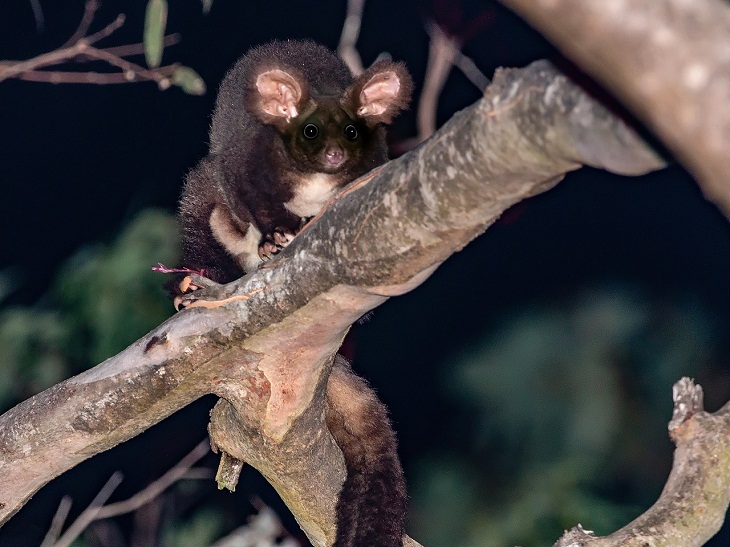
The greater glider is a skilled aerial acrobat, with a gliding range of up to 330 feet (100.5 m) as it soars between trees. However, it's not just their acrobatics that makes them so endearing. A glider's enormous ears aren't just adorable; they are also vital for the detection of predators and communication with other gliders. Meanwhile, their bushy tail helps them to steer while gliding, making for an even more impressive sight.
Unfortunately, the greater glider's future is uncertain due to habitat loss. As their homes, the large old trees with hollows, are disappearing, so too are the greater gliders themselves. Efforts are being made to protect their habitats and increase awareness of their plight, but much work remains to be done.
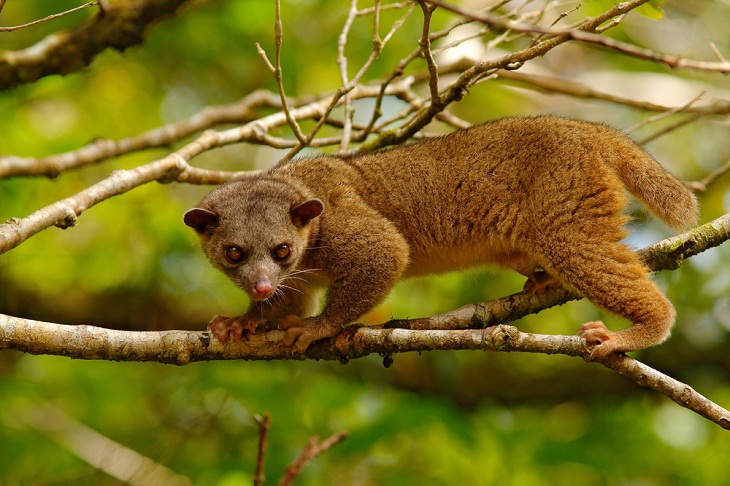
The kinkajou, known as the "honey bear" for its love of sweet nectar, is an absolute showstopper. Its fur is so soft and plush that you'd swear it was a stuffed animal. The kinkajou is a rainforest superstar, performing death-defying stunts high in the canopy. Its agile body is perfectly adapted to life in the trees, with a long, grasping tail and razor-sharp claws that grip tightly to branches as it swings through the forest. Watching this little creature in action is like witnessing a true acrobat, effortlessly jumping, twisting, and turning like a seasoned circus performer.
The animal's large, expressive eyes seem to take in everything around it, making it hard not to be captivated by its charm. With its prehensile tail that seems more like a third arm than a mere appendage, the kinkajou can hang upside down and even rotate its ankles to climb down trees headfirst. So the next time you're hiking through the rainforest, keep an eye out for the elusive kinkajou - you might just catch a glimpse of this cute and crafty creature.
See Also: These Rare Animals Are Both Weird and Wonderful
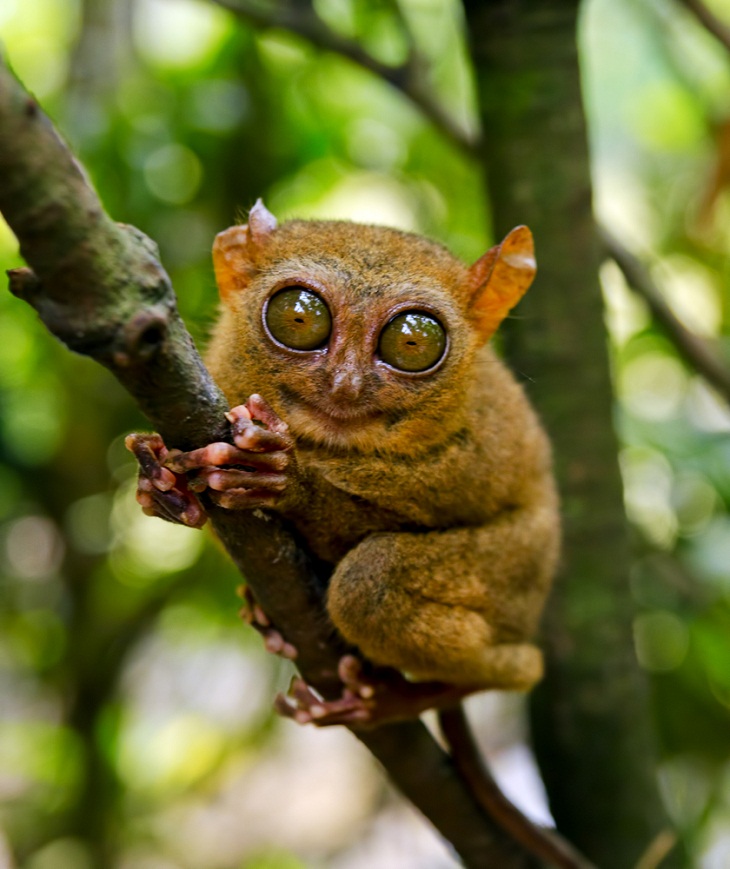
Tarsiers are a perfect example of how nature's quirks can create something adorable. Their large, luminous eyes and disproportionately long limbs make them seem like they jumped right out of a storybook. Native to Southeast Asia, tarsiers' huge, unblinking eyes help them spot insects in the dark. Their bat-like ears also give them the power to hear a cricket from up to 50 feet (15 m) away, making them formidable hunters in the tree canopy.
Even though they are primates, tarsiers are strictly carnivorous and eat insects, small birds, lizards, and bats. They rely on their impressive night vision and acute hearing to track down prey.